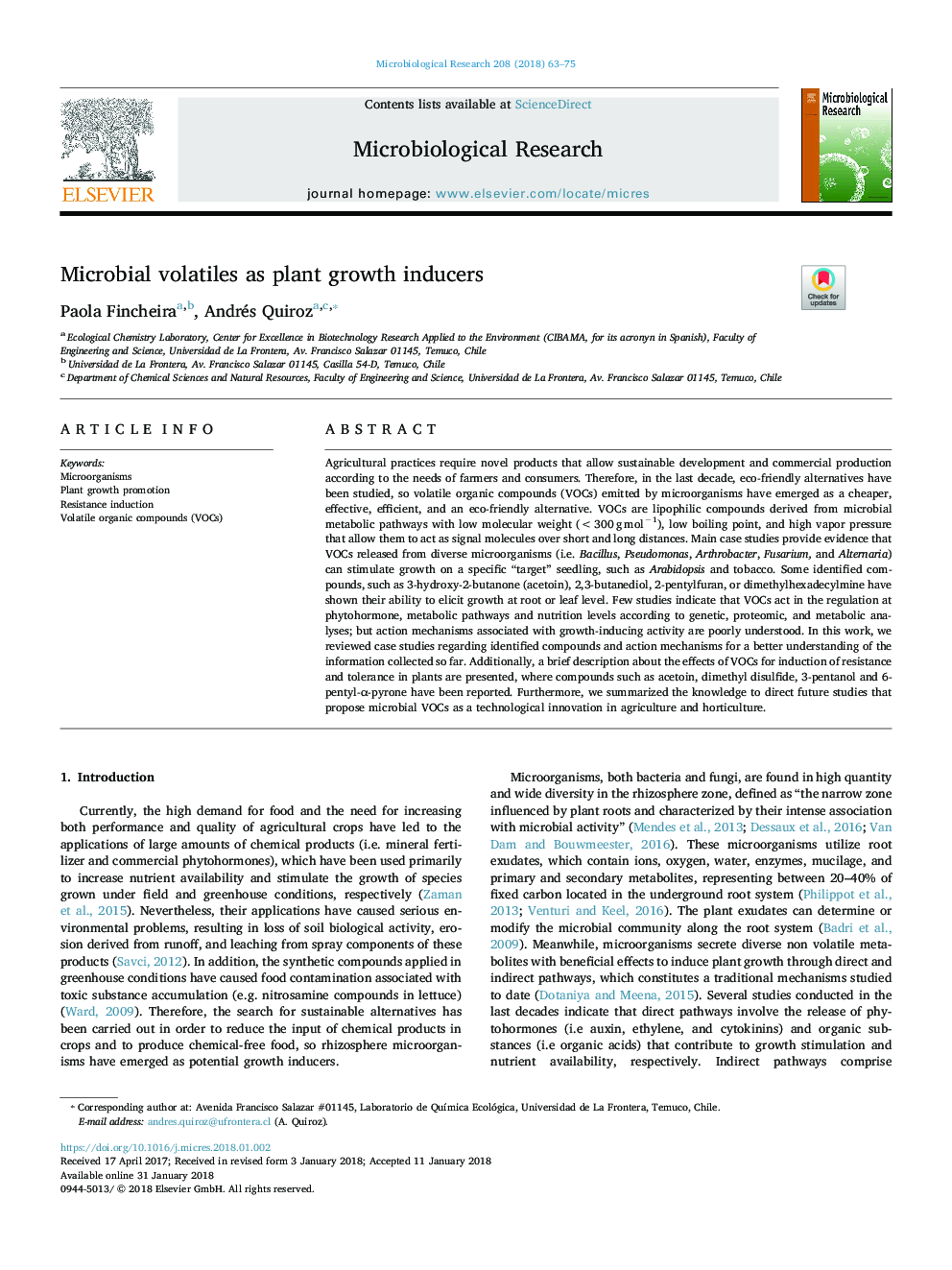| Article ID | Journal | Published Year | Pages | File Type |
|---|---|---|---|---|
| 8423049 | Microbiological Research | 2018 | 13 Pages |
Abstract
Agricultural practices require novel products that allow sustainable development and commercial production according to the needs of farmers and consumers. Therefore, in the last decade, eco-friendly alternatives have been studied, so volatile organic compounds (VOCs) emitted by microorganisms have emerged as a cheaper, effective, efficient, and an eco-friendly alternative. VOCs are lipophilic compounds derived from microbial metabolic pathways with low molecular weight (<300â¯gâ¯molâ1), low boiling point, and high vapor pressure that allow them to act as signal molecules over short and long distances. Main case studies provide evidence that VOCs released from diverse microorganisms (i.e. Bacillus, Pseudomonas, Arthrobacter, Fusarium, and Alternaria) can stimulate growth on a specific “target” seedling, such as Arabidopsis and tobacco. Some identified compounds, such as 3-hydroxy-2-butanone (acetoin), 2,3-butanediol, 2-pentylfuran, or dimethylhexadecylmine have shown their ability to elicit growth at root or leaf level. Few studies indicate that VOCs act in the regulation at phytohormone, metabolic pathways and nutrition levels according to genetic, proteomic, and metabolic analyses; but action mechanisms associated with growth-inducing activity are poorly understood. In this work, we reviewed case studies regarding identified compounds and action mechanisms for a better understanding of the information collected so far. Additionally, a brief description about the effects of VOCs for induction of resistance and tolerance in plants are presented, where compounds such as acetoin, dimethyl disulfide, 3-pentanol and 6-pentyl-α-pyrone have been reported. Furthermore, we summarized the knowledge to direct future studies that propose microbial VOCs as a technological innovation in agriculture and horticulture.
Related Topics
Life Sciences
Biochemistry, Genetics and Molecular Biology
Biotechnology
Authors
Paola Fincheira, Andrés Quiroz,
